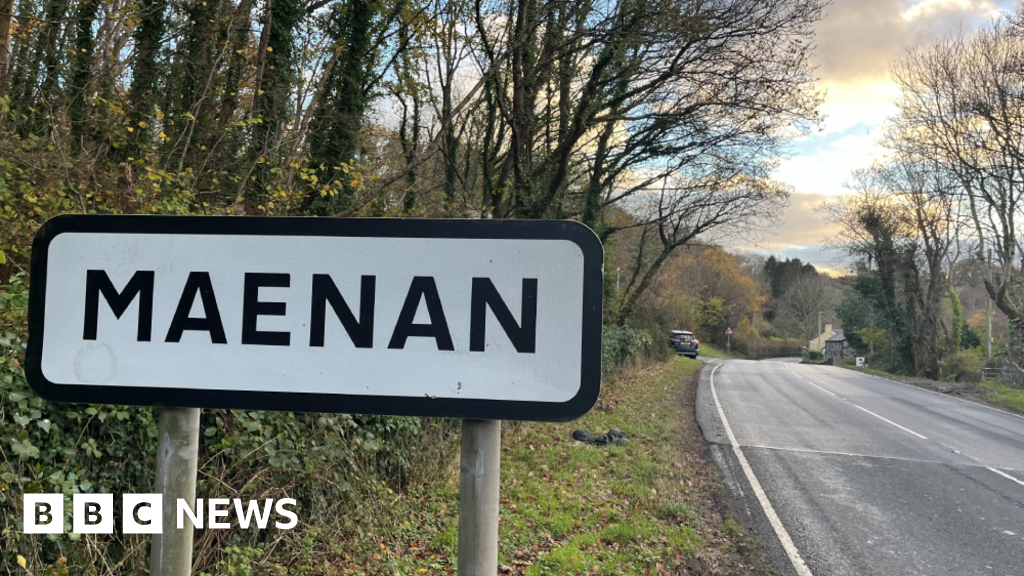One of America’s most wanted men arrested in north Wales after more than 20 years on the run had probably been there for a number of years, possibly using an alias, says an agency involved in his arrest.
Daniel Andreas San Diego, 46, was detained on Monday, Britain’s National Crime Agency (NCA) told the BBC.
North Wales Police said he was in a remote location above Maenan in the Conwy valley in Conwy county.
America’s Federal Bureau of Investigation (FBI) said it believed he was involved in the bombing of two office buildings in San Francisco, California, in 2003, and now faces extradition to the United States.
The FBI has accused him of being “an animal rights extremist”.
The first bombing was in August 2003 with two explosions an hour apart on the campus of a biotechnology company, followed by a nail bomb at a nutritional products company a month later, the FBI said.
He became the first “domestic terrorist” to be added to the agency’s most wanted terrorist list, saying he “should be considered armed and dangerous”.
The FBI also said he was “skilled at sailing, and has travelled internationally”.
Michael J Heimbach, the FBI’s assistant director of the counterterrorism division, said the suspect had committed “domestic acts of terror planned out and possibly intended to take lives, destroy property and create economic hardship for the companies involved”.
It offered a reward of $250,000 (£199,000) for information leading to his arrest, saying he could have been living in Costa Rica.
According to reports, the agency’s last sighting of him was in 2003, when FBI agents were close in downtown San Francisco.
“He parked his car, got out of his vehicle and started walking down the street and if I’m not mistaken, he went into a Bart [train] station and that was the last time we’ve seen him,” David Johnson, an FBI agent, said in 2013.
Andrew Black, a former FBI agent, said the case at the time was “of great interest” to the bureau.
“We had recently solved the Unabomber investigation, and bombings were a serious concern to the FBI and trying to solve them,” he told CBS news.
The FBI’s most wanted terrorist list was created by then President George W Bush in October 2001, weeks after the 11 September attacks on New York City and Washington DC.
President Bush said the list would “shine the light of justice” on terrorists, who he said “try to operate in the shadows”.
“Terrorism has a face, and today we expose it for the world to see,” he said.
The first list had 22 people on it, including Osama bin Laden, who is believed to have ordered the 9/11 attacks, and was killed by US forces in Pakistan in 2011.
In 2013, Joanne Chesimard, a convicted killer who was a member of the Black Liberation Army also known as Assata Shakur, became the first woman to be added to the list.
There are currently 24 people on the list.
articol editat:
Fugitive Tied to 2003 Bombings Captured After Two Decades in Hiding
In a significant development, Daniel Andreas San Diego, a man long sought by U.S. authorities, was apprehended in a secluded area of North Wales after evading capture for over 20 years. His arrest, announced by the National Crime Agency (NCA) of the United Kingdom, raises intriguing questions about his years in hiding.
According to reports, San Diego, now 46, was discovered in a remote region above Maenan in Conwy County. Authorities believe he may have lived under an alias for an extended period to evade detection. The FBI, which added San Diego to its list of most wanted terrorists back in 2003, associates him with the bombing of two San Francisco office buildings attributed to animal rights extremism.
The first of the bombings occurred in August 2003 when two blasts detonated about an hour apart at a biotechnology firm. This was followed a month later by a nail bomb targeting a nutritional products company. Aiming to talk down his actions, the FBI remarked that he had committed "domestic acts of terror planned out and possibly intended to take lives, destroy property and create economic hardship for the companies involved."
FBI Assistant Director for the Counterterrorism Division, Michael J. Heimbach, emphasized the serious nature of San Diego’s alleged crimes, adding that he "should be considered armed and dangerous." The FBI’s pursuit was bolstered by a reward of $250,000 for information leading to his capture.
Since his disappearance, there have been rumors of him residing in Costa Rica, but the agency’s last confirmed sighting was in downtown San Francisco shortly after the bombings. "He parked his car, got out of his vehicle and started walking down the street. If I’m not mistaken, he went into a Bart [train] station and that was the last time we’ve seen him," recalled David Johnson, an FBI agent, in 2013.
The FBI’s most wanted terrorist list was established in the wake of the 9/11 attacks in 2001 by then-President George W. Bush, declaring that it would "shine the light of justice" on terrorists. San Diego was notably the first "domestic terrorist" added to this list, a testament to the significant public and governmental concern surrounding his activities. In 2013, the list expanded to include Joanne Chesimard, a convicted killer, marking a shift towards recognizing female suspects in domestic terrorism.
As San Diego now faces potential extradition to the U.S., the case highlights ongoing concerns regarding domestic terrorism and the need for continued vigilance against radical extremism. Authorities are determined to bring San Diego to justice for his alleged role in terrorizing communities through violence.
The story of Daniel Andreas San Diego serves as a reminder of the lengths some individuals will go to evade capture and the enduring nature of law enforcement efforts to ensure public safety.


